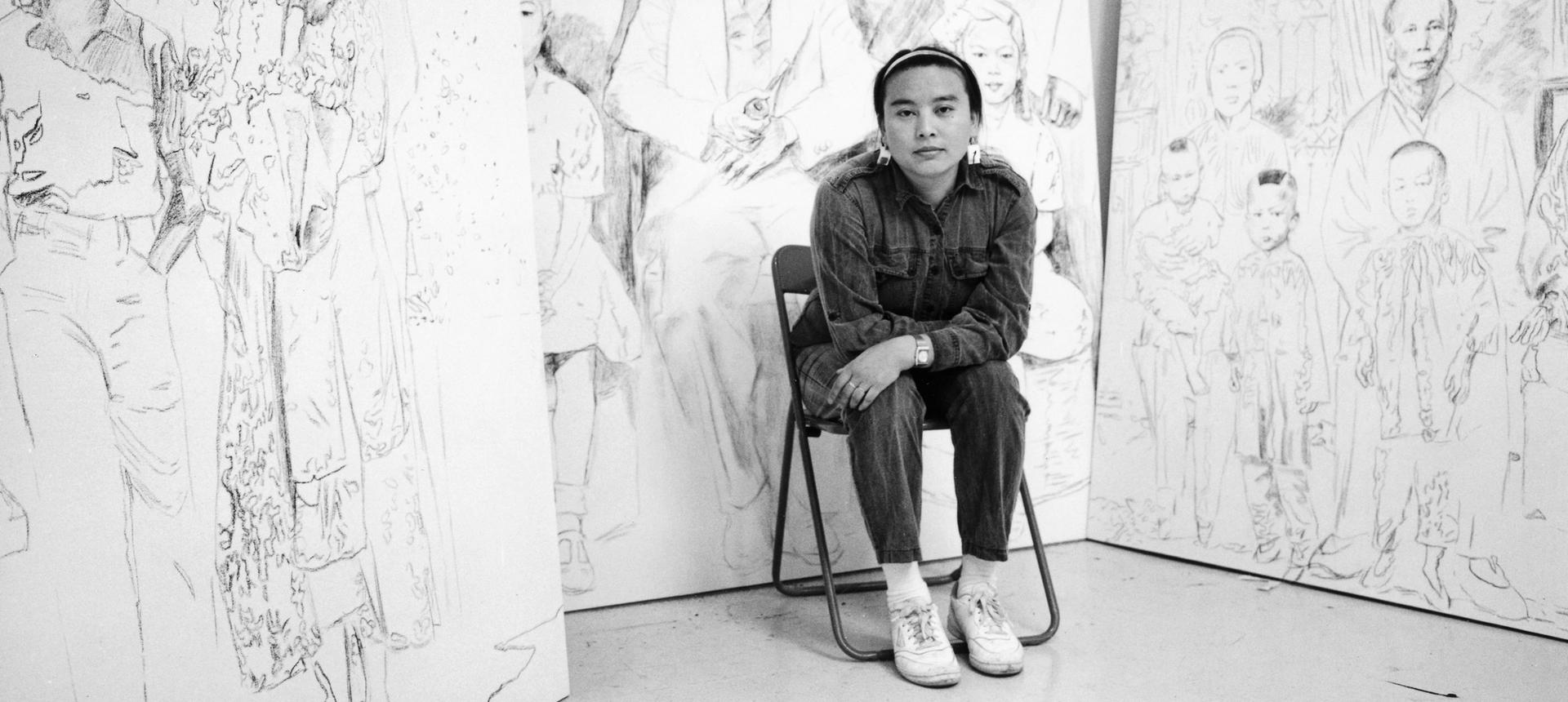WHAT ARE YOU LOOKING FOR?

The life and work of Hung Liu
Born in 1948, Hung Liu grew up in China during the Maoist regime. Trained as an artist in the Socialist Realist style, she emigrated to the US in 1984 where she studied with Moira Roth, the influential feminist art historian, as well as with Allan Kaprow, the American originator of Happenings. Known for paintings based on historical Chinese and, later, American photographs by Dorothea Lange, Liu focused on the experiences of generations preceding her own. Her subjects included refugees, street performers, soldiers, laborers, prisoners, migrant workers, and what might be called the women and children of revolutionary modernity. A naturalized American citizen, Liu believed we can—and should—adopt each other’s ancestors.
As a painter, Liu challenged the documentary authority of photographs by subjecting them to the slower, more reflective process of painting. Much of the meaning of her “weeping realism” comes from the way in which washes of linseed oil and drips of paint dissolve the documentary images, suggesting the passage of memory into history, while working to uncover the cultural and personal narratives fixed and often concealed in the photographic instant. “I want to both preserve and destroy the image,” she said.
In effect, Hung Liu turns old photographs into new paintings. She summons ghosts. There are a lot of ghosts waiting between the lines of history. As an artist, Liu summons them into the visual present, seducing them with strokes and layers of paint, with images, colors, and sometimes physical objects—offerings intended to keep them close. She is now among them. Liu’s is an ancestral art.
Work
View all work



